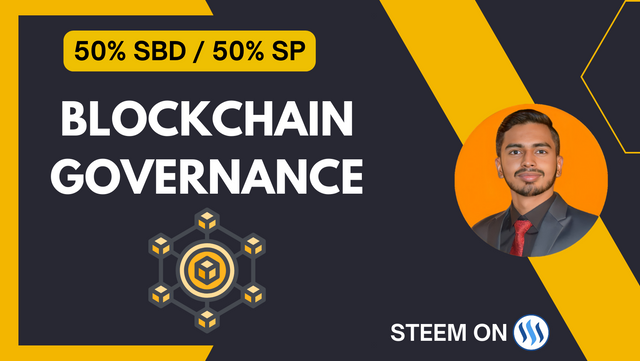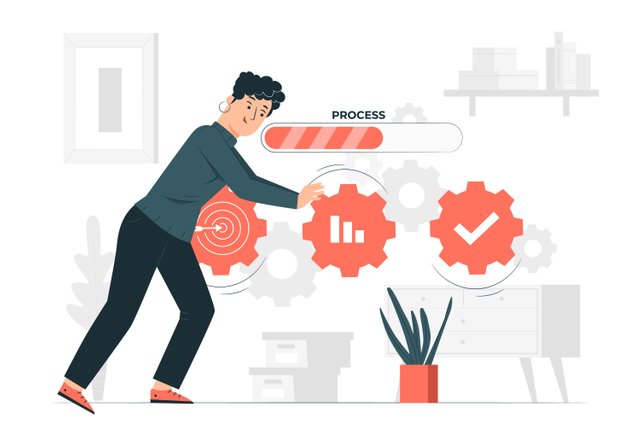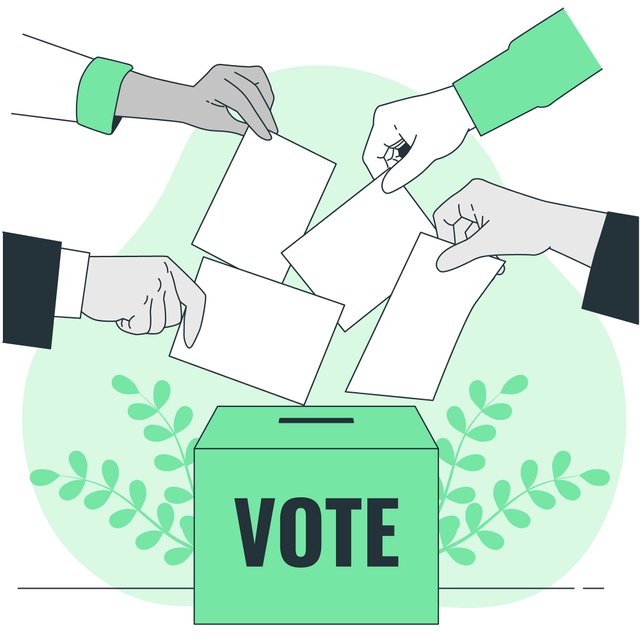Blockchain Governance

Introduction
We all know for sure that blockchain technology is a digital ledger where all transactions are logged. The data of each transaction is saved in a block; then many blocks are connected – that’s why it’s called a blockchain. Anyhow, I had already explained that carefully in one of my previous posts. Today, I will discuss blockchain governance; what exactly is it? So, whenever we discuss governance, the first thing that comes to mind is the policies and working of the system. In the same way, blockchain governance is anything that governs the principles, day-to-day working, and changes of the blockchain. Since the blockchain is decentralized, governance is necessary to ensure that it is functioning flawlessly. Governance is used to determine whether or not a change is necessary. Furthermore, in case of any issue such as a security breach or technical problems, Governance structure assists in the fixing.
Key Principles That Underlie Blockchain Governance
There are some basic principles that are essential to understand the entire system. Let’s have a little closer look at these principles.
1. Decentralization:
This principle of governance ensures that power is distributed uniformly, and there is no central point of failure.
2. Transparency:
All transactions on the blockchain are publicly recorded and can be accessed by anyone. It also benefits all participants since each one has a fair understanding of how the system functions and no clandestine motives could be followed.
3. Security:
When blockchain is the question, security is always a major concern. The network cannot be controlled because it employs a variety of cryptographic technologies. These include consensus algorithms, which minimize the chance of the system being manipulated.
4. Inclusiveness:
Another important principle is inclusiveness. Blockchain governance desires that every stakeholder, especially miners, developers, and users, are involved in the governing process. This entails that every stakeholder’s opinion is taken into consideration and factored into the decision-making process.
5.Adaptability:
Governance structures need to be flexible so that new challenges and opportunities can be efficiently handled.
Understanding and implementing these principles is essential for blockchain networks. To put it another way, these principles are vital for blockchain networks. They not only help to build a healthy and strong blockchain ecosystem. Instead, they assist in the realization of the true purpose of technology.
Role of Consensus Algorithms in Blockchain Governance
Consensus Algorithms in Blockchain Governance: Consensus algorithm is something that we can’t afford to skip when we are discussing blockchain governance. These algorithms are used for on-chain decision making within blockchain networks. Since I have described proof-of-work and proofs of stake in one of my previous posts, I won’t be doing that here. So, I will simply discuss how these consensus mechanisms are utilized for decision-making in blockchain governance.
Let’s start by discussing PoW (Proof of Work). The best thing about PoW is that it allows the organization to be decentralized and secure. Each member of the organization, miners especially, is motivated to do its best to secure the public ledger because they have to invest a massive amount in computational power in adding a new block. It becomes extremely expensive and near to impossible for any individual or group to gain control over the chain. Through PoW, fair play is maintained on the chain making it secure.
Now let's talk about Proof-of-Stake (PoS), which is a relatively newer and more energy-efficient algorithm. Decision making is democratic and energy-efficient in PoS. Here the block validation process consumes minimal energy and the one who stakes the most gets the most power. By involving stakeholders, it is made democratic as they have a say in decision-making.
On-chain Voting Protocols
Another important feature of decision-making in governance is on-chain voting. This means the voting process is directly implemented in blockchains. The primary purpose of this protocol is to allow every member of the network to participate in governance decisions. Any active stakeholder in the network can submit a proposal, such as a software update, a rule change, or any financial decision.
The next step is the allocation of voting rights. Voting rights are usually, in most of the protocols adoptions, based on stakes. This means that the more coins or tokens you have, the louder your voice will be. Hence, the majority of decisions go in favour of stakeholders with a higher stake, which is fair as they have a lot to lose in the scenario.
Stakeholders make a vote by voting through their digital wallets. Each vote is treated as a transaction. This whole process exists on the public ledger and all decisions are fully transparent as anyone can look at the transaction history. After all votes, the decision is agreed based on a predefined set of rules, such as majority and quorum. If agreed, the modifications are made, if disagreed, it remains as it is.
Role of the Community in Blockchain Governance
Understanding the role of the community in blockchain governance is very important. This community consists of developers, miners or validators, and regular users. Each has a unique role that helps run the blockchain network.
Developers are the people who develop and maintain the blockchain software. These are tech-savvy individuals or teams who develop new features, fix bugs, and keep the system updated. Their main role in governance is to bring technical proposals, such as network upgrades or protocol changes.
Blockchain, particularly cryptocurrencies like Bitcoin and Ethereum, rely on miners to validate transactions and keep the network secure. Their role in governance is crucial because often, their majority approval is required to implement any major change.
Finally, users are the actual end-users of the network. These can be individual wallet holders, small businesses, or large corporations that use blockchain technology for their daily transactions or operations.
Users also play an important role in governance. Their input is especially important in the context of user experience and system usability. If users are not happy with an update, they can collectively express this, which can guide developers and miners/validators on what changes are needed in governance decisions.
Some Challenges Faced in Blockchain Governance
Blockchain governance, as innovative and transformative as it is, also has challenges. Especially when you want to manage a system that is decentralized and where everyone's opinion is heard, some issues are bound to arise.
- The biggest challenge in blockchain governance is striking a balance between decentralization and efficiency. The purpose of decentralization is to prevent any single entity from having control, but when many people are involved in making decisions, the process becomes slow. This affects efficiency because consensus from so many people is required for every small decision.
As blockchain technology becomes more popular, security threats are also increasing. Hackers are developing new methods to exploit weaknesses. In the governance model, especially where multiple parties are involved, ensuring everything remains secure is a tough task.
Designing incentive mechanisms that are fair and effective is another major challenge of blockchain governance. It is about ensuring that every participant, whether a miner, developer, or user, receives proper incentives to support the network and contribute to good decisions.
Conclusion
Blockchain governance is an emergent domain that benefits transparency, security, and decentralization. It utilizes multiple consensus mechanisms, including Proof-of-Work and Proof of Stake, amongst others, to ensure the network’s safety and equity. As blockchain governance entails multiple governance challenges, including the interplay between efficiency and decentralization, network security, and incentive mechanisms, there are various aspects which need to be researched and innovated.




Note:- ✅
Regards,
@jueco
Thanks for the feedback. 😊